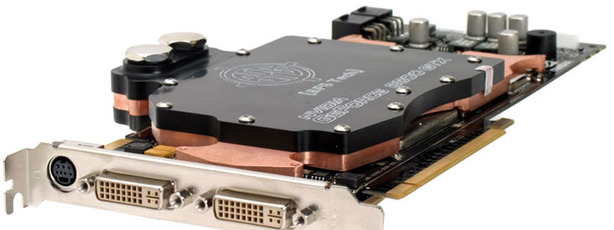
Gameplay Evaluations – How We Tested:
There are no timedemos used in our evaluations – we're focusing on the real-world gameplay experience. Ultimately, this is what should determine your next video card purchase.NVIDIA recommended that the minimum resolution we should test GeForce 8800 at should be no lower than 1600x1200. However, in order to really see the benefits of GeForce 8800-series, you're going to need a 24" or 30" widescreen monitor.
Because the benchmarks are done manually, there are slight differences between runs. However, we have run each benchmarking scenario through at least three times to get consistent average and minimum frame rates. In order to understand our testing methodologies, you will not go far wrong by following the logic that the higher the anti-aliasing, anisotropic filtering and in game details, the faster the graphics solution in that particular title.
NVIDIA System Setup
- BFGTech GeForce 8800 GTX Watercooled Edition – operating at its default clock speeds of 575/1800MHz using Forceware version 97.44;
- NVIDIA GeForce 8800 GTX – operating at its default clock speeds of 575/1800MHz using Forceware version 97.44;
- BFG Tech GeForce 8800 GTS – operating at its default clock speeds of 500/1600MHz using Forceware version 97.44.

ATI System Setup
- ATI Radeon X1950XTX – operating at its default clock speeds of 650/2000MHz using Catalyst 6.12 WHQL.
________________________________________________________________________________
We use the following abbreviations on our best-playable settings tables:
- QA AA – Quality Adaptive anti-aliasing (ATI Radeon X1000 series);
- PA AA – Performance Adaptive anti-aliasing (ATI Radeon X1000 series);
- HQ AF – High Quality Anisotropic Filtering (ATI Radeon X1000 series);
- TSS AA – Transparency SuperSampled anti-aliasing (NVIDIA GeForce 8 series);
- TMS AA – Transparency MultiSampled anti-aliasing (NVIDIA GeForce 8 series).

MSI MPG Velox 100R Chassis Review
October 14 2021 | 15:04








Want to comment? Please log in.